8 business tips for selling design goods
Top advice for making money as a designer-maker.
Online retailers like Not On The High Street and Etsy have significantly lowered the barriers to entry for anyone wanting to try their hand at selling their design goods online. That said, it's an increasingly crowded marketplace, and it's by no means easy to make a success of your online store.
In this article, we'll offer some advice for the kind of products you should consider selling, and how to make sure your business is commercially viable. If you'd like some ideas as to how your online shop could look, then check out our post on inspiring ecommerce websites.
01. Know your materials
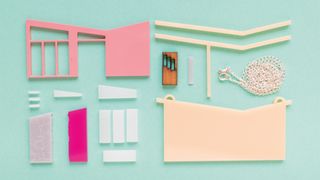
Adjusting your mindset into that of a product designer can be challenging at first, but it’s essential to have the materials available to you in mind when starting the design process, to understand the limits of what is possible.
"I love the challenges involved with Perspex," reveals seller Kim Lawler, founder of Finest Imaginary. "It’s such a versatile material to work with and comes in different colours and finishes. I can’t recommend it enough."
02. Test the waters with printed goods
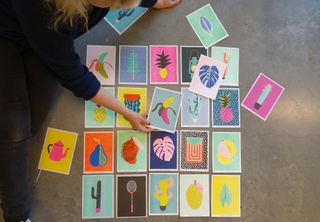
Small-run printed items such as cards, prints, notebooks and postcards are a firm favourite among illustrators and designers, and are a popular route into the designer-maker market; such products can often be turned around in less than a day.
With a decent colour printer costing less than $250/£250, printed goods are a relatively low-risk activity – but letterpressed or screen printed materials command higher prices. Whether you choose to sell online or post samples to potential wholesalers, print is a safe way to test the waters before moving on to more ambitious projects. See our list of the best printers here.
03. Don't buy pricey equipment to start with
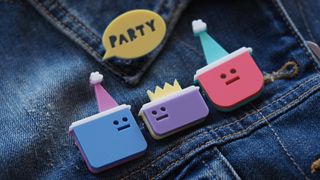
Making your own products often requires specialist equipment, which can bump up launch costs before you know if your venture is going to make any money. When you first start out, consider outsourcing the making process.
Enthusiasm for DIY-style accessories shows no signs of slowing down, and transforming your ideas into sellable necklaces, earrings, patches and pin badges can be done quickly and, if you're clever, cheaply.
Popular materials include lightweight wood and perspex, which comes in a variety of bright colours, and RockCakes’ Sarah Meredith (who sells the acrylic pins shown above) recommends using Yeah Laser for small runs.
04. Work with editions
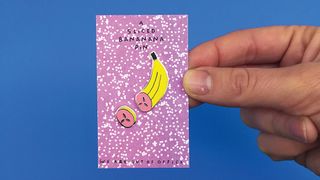
Working with a design that can easily be replicated is a smart idea. A black cactus pin is one of We are out of office’s bestsellers. "You do the design once and multiply it," says owner Felix van Dam.
"That’s what makes a pin a nice product to work with. We screen print or risograph print the backing cards ourselves, and when the pins arrive from our supplier we spend a few hours putting pins on cards. We’ve sometimes made up to 1,000 new pins to sell in one evening, which in our eyes makes it quite a lucrative exercise."
05. Make larger quantities

In some cases, producing larger quantities can be very cost efficient, particularly when working with screen printing. "Make a lot, stash it somewhere and you can sell it for a long time," advises van Dam.
Setting up a screen can be a costly exercise, so where possible, printing in bulk makes sense. "Printing at digital printers is also a possibility, but screen printing is much more attractive," he says, so people are more likely to buy it. "Two years ago we bought a risograph printer and it’s one of the best investments we ever made."
06. If it's not cheap, make it collectable
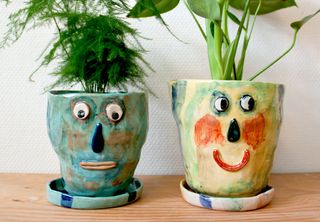
Purely decorative, collectable objects have exploded on Instagram and Pinterest in recent years, and designer-makers are jumping on the bandwagon. Ceramics in particular are having a moment. People are usually willing to pay more for unique or limited-edition products.
However, production costs will be higher, so keep an eye on your profit margins. "If I were more into selling, I’d make moulds and cast a series of ceramic objects instead of making just one of each," suggests illustrator Karin Hagen.
"At first I had pretty low prices, but then I started to calculate what the hourly rate would be and I had to make some adjustments."
07. Wear your own brand

For many pro illustrators and designers, securing a commission with a clothing label is among the most coveted jobs out there. But rather than wait for the phone to ring, why not make your own? At a basic level, applying your artwork to a plain black or white T-shirt is super-easy to do, and the buzz you’ll get from wearing your designs out in public will spur you on to experiment further.
Artist-led brands such as Johnny Cupcakes and AnyForty had to start somewhere! Screen printing assures longevity for your efforts, and is a skill that can be mastered through studio workshops such as those run by Print Club London.
This article originally appeared in Computer Arts magazine, the global design magazine. Subscribe to Computer Arts magazine here.
Read more:

Thank you for reading 5 articles this month* Join now for unlimited access
Enjoy your first month for just £1 / $1 / €1
*Read 5 free articles per month without a subscription

Join now for unlimited access
Try first month for just £1 / $1 / €1
Get the Creative Bloq Newsletter
Daily design news, reviews, how-tos and more, as picked by the editors.
Founder & director of Inkygoodness, Lisa is a published writer and arts journalist, focusing on creative business, graphic art and illustration and design education. Her words have appeared in Computer Arts magazine, Creative Bloq, Digital Arts and IdN.












